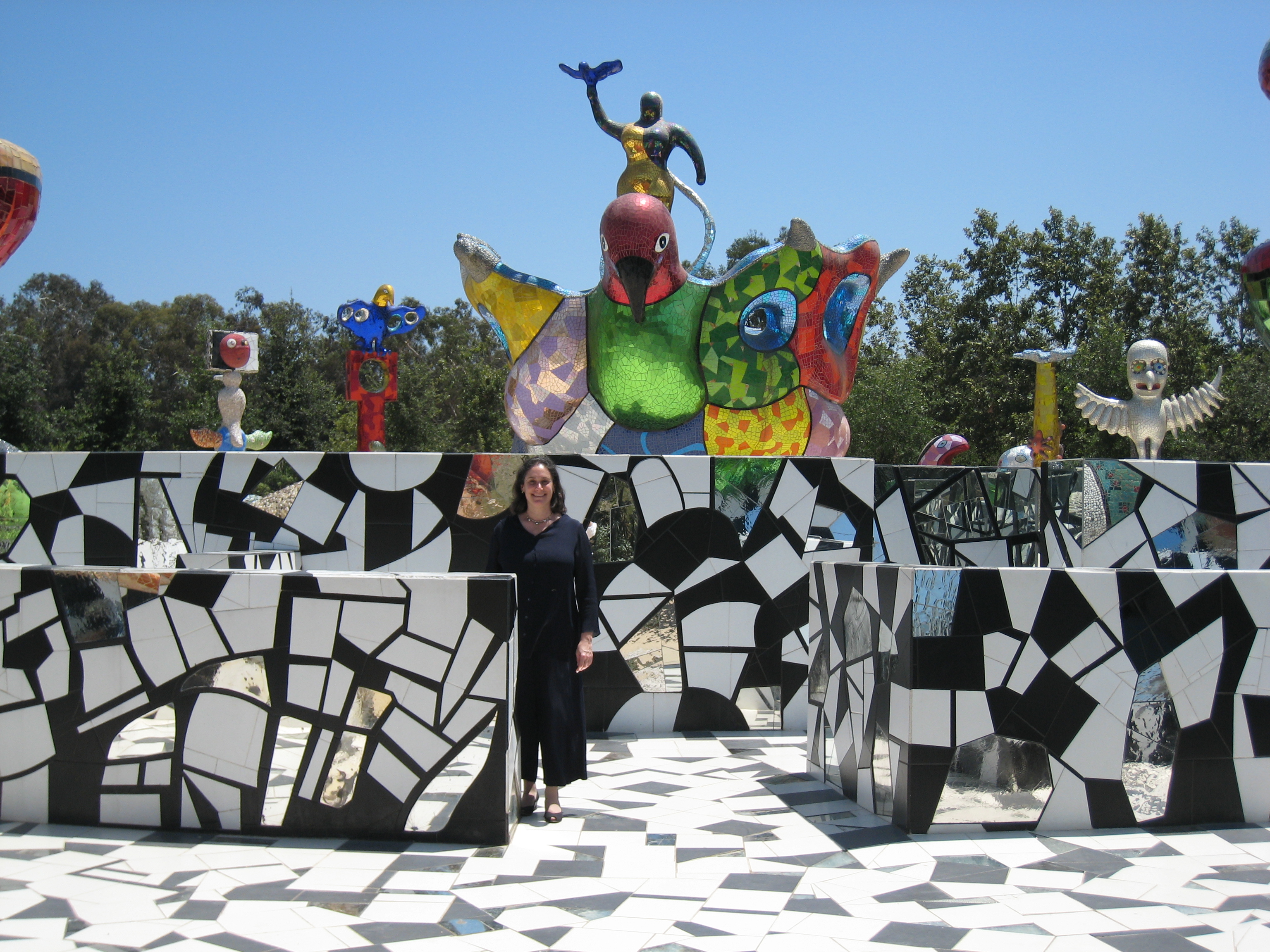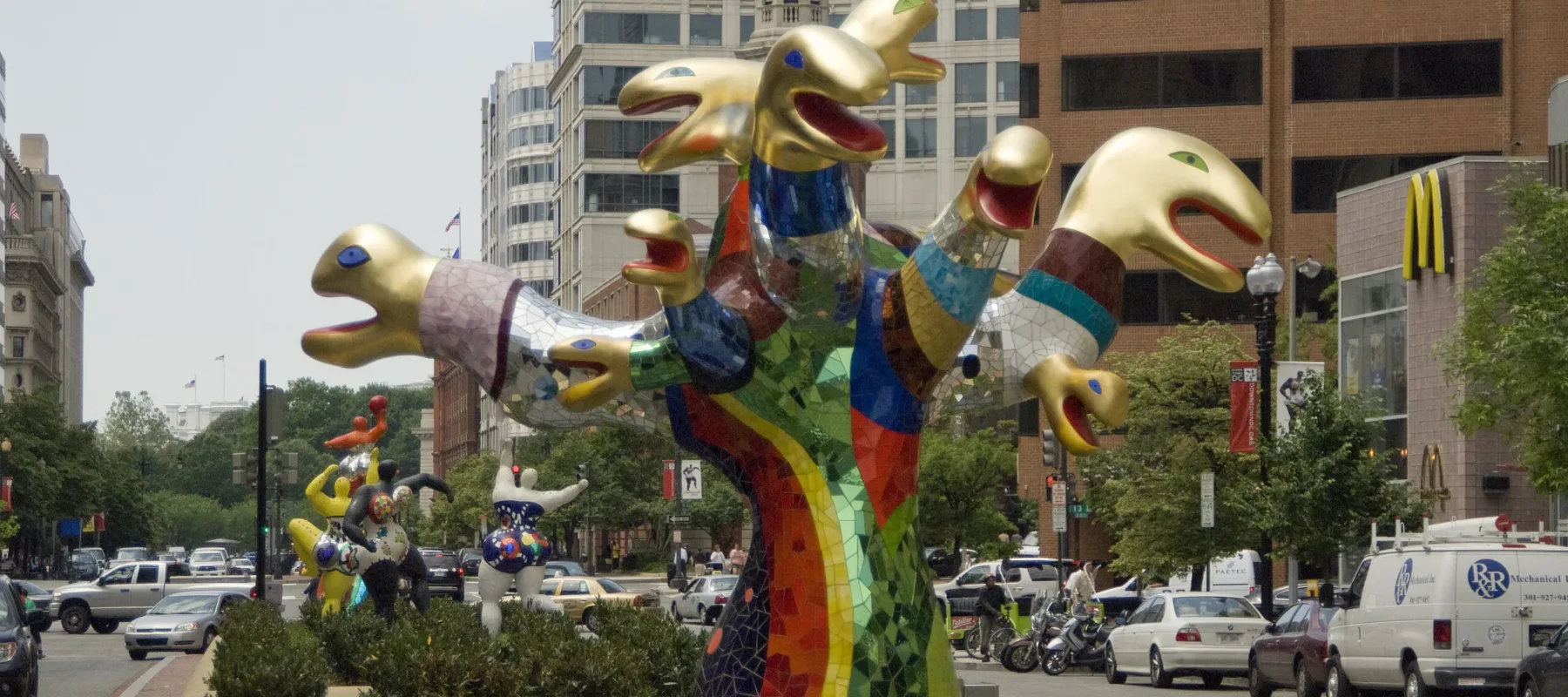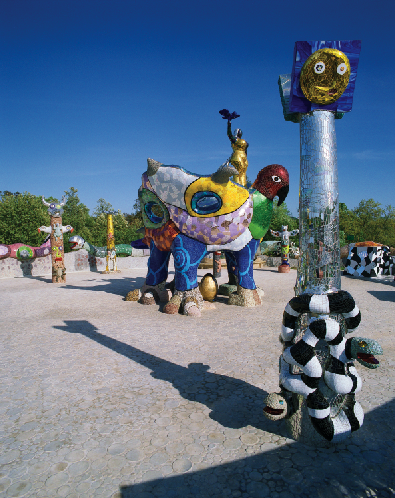Niki de Saint Phalle, whose work will soon be on view as part of the New York Avenue Sculpture Project, worked in varying scale and a range of materials throughout her career. Though Saint Phalle did work in more traditional media such as oil paint, she first gained the attention of the art world in 1961 through her Tirs or “shooting paintings.” Through these works, she expressed her anger toward patriarchal power and conservatism. To create her Tirs, Saint Phalle filled containers with paint and embedded them in plaster assemblages—three dimensional collages. Niki de Saint Phalle and others shot at the works with a rifle, bursting the containers, and sending paint down the surface of the plaster.
Saint Phalle’s Tirs illustrate that destruction can lead to creation, a principle she applied in subsequent mosaic sculptures with pieces of broken glass, ceramic, and mirror. She had discovered mosaic in the 1950s with visits to Antonio Gaudí’s Park Güell in Barcelona and Joseph-Ferdinand Cheval’s Le Palais Idéal in southern France and was inspired by the use of stone and mosaic work but also by their participatory nature. Saint Phalle wrote to her husband and fellow artist Jean Tinguely about Gaudí and Cheval: “They represented the beauty of mankind…without any intermediary, without museum, without galleries.”
The New York Avenue Sculpture Project will feature four examples of her monumental public sculptures with mosaic done in polyester, mirror, ceramic, and glass. These already exuberant sculptures are further enlivened by the texture and reflection created by their mosaic surface. Some of her mosaic sculptures are single figures displayed along or in small groups but she also created large scale environments.
Between 1978 and 1998, Saint Phalle and a team of collaborators worked on the Tarot Garden or Giardino Dei Tarocchi in Tuscany. Inspired by the symbolism of the Tarot, 22 large scale sculptures were created. Some of the sculptures included interior space, and Saint Phalle lived and worked in The Empress for a period of seven years. In 2000, Niki de Saint Phalle began work on a second sculpture garden: Queen Califia’s Magical Circle in Escondido, California. Completed in 2003, a year after the artist’s death, the Garden consists of nine sculptures as well as architectural elements and landscaping “inspired by California’s mythic, historic and cultural roots.”
You can save yourself a trip to Tuscany or Southern California by visiting the New York Avenue Sculpture Project, opening in late April 2010!


